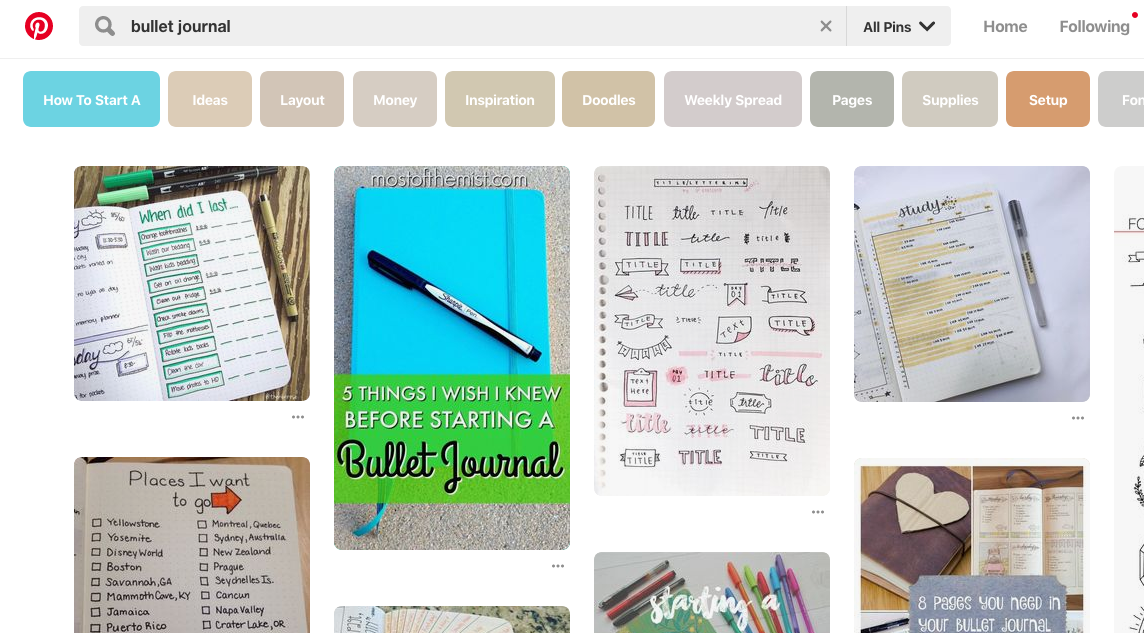Ryder Carroll developed the idea of bullet journaling to be more productive, in the face of his learning disabilities. It wasn’t long before bullet journaling became a full-blown productivity practice and a trending topic across social platforms, especially on YouTube, where the bullet journaling community share videos about personal progress.
Bullet journaling has become so popular because it gives people a way to organize their thoughts and feelings in an overloaded, digital world. By going back to basics and only using a pen and paper to plan, people can create a schedule that’s free from interruptive notifications. Ryder has described this focus as intentionality — a topic that was the focus of his very own TEDx Talk.
Environmentalism is also a topic on many people’s minds nowadays, with most people intending to become environmental. Luckily, bullet journaling can help with this. In this blog post, we’ll share how you can reduce your carbon footprint through the practice of bullet journaling. Whether it’s being honest about your intentions and long-term goals, building ingrained habits, or sustainably planning your next holiday, this blog covers it all.
Set Your Intentions in a Personal Goals Page — You can begin bullet journaling in any notebook or sketch pad, and most people start the process with some form of an introductory page. The great thing about bullet journaling is how customizable it is. So while some people may have a formal contact details-type page, others start by simply stating their goals.
A typical “Goals for the Year” page sourced from Silva and Bold on Pinterest.
If your mission is to become more aware of your environmental impact, we suggest you set some goals.
Close to Ryder Carroll’s original plan, a goal’s page will outline your key intentions for the year — or whatever timeline you choose to follow — to make sure you stay progressive and productive.
When creating a goal’s page, it’s best to keep it simple — so, don’t overload yourself with a mountain of goals. On this page, you should list four or five of the goals you absolutely must reach. Of course, these topics will probably be broad and therefore have sub-goals, but you don’t need to list them on this specific page.
A huge part of bullet journaling is creative, and so your goals page should be designed in a layout that’s attractive to you. Once finished, you likely won’t add to this goal page frequently, but you will want to revisit it to remind yourself of your intentions. A personal goal’s page is the compact equivalent of an effective vision board. It’s a place where you can see your greatest desires at a glance and be reminded of them when things get tough.
Create a Habit Tracker to Prioritise Waste-Free Behaviour — If you’re a visual learner, this next tip will work in your favor. Although every bullet journal is different, most journals include this type of page where achievements can be easily ticked off.
The premise of a habit tracker links to studies on the creation of lifelong habits — such as Dr. Maltz’s theory that states habits take 21 days to form. To create this type of page, you should think about your major goals, their sub-goals, and how you can translate these into a desired behavior.
Let’s use commuting as an example of a sub-goal for reducing your carbon footprint. A positive behavior to improve your carbon footprint when it comes to commuting might be to cycle to work, instead of driving and dumping tonnes of fossil fuel in the process.
The next step would be to list “cycle to work” in the left-hand column of your habit tracker and mark out 21 — or however many days you deem appropriate — boxes to fill out, tick off or highlight.
Each day you manage to resist getting the car out of the garage and cycle to work, you get to cross off another square. Using graph paper for this type of page is recommended.
A habit tracker is a great way for visual learners to see their progress — but there’s also no denying the average person loves ticking off chores from a list. This action signifies a job done, and an accomplishment made. A habit tracker also serves as living proof after the act that you managed to cycle to work— or any other equivalent task you managed to achieve.
An example of an in-progress habit tracker sourced from tinkerabout on Pinterest.
These types of pages are why bullet journaling is the ideal way to self-develop. Anyone who is attempting to live waste-free will know it can be difficult to keep track of your progress without writing it down. Buzz phrases such as “waste-free” also make broad goals seem overwhelming and unattainable, but using a habit tracker breaks this dream down into manageable, realistic tasks.
Iron out Long-Term Plans with an Annual Calendar — Any lifestyle change becomes a lot easier when you prepare. This doesn’t just apply to environmentalism. For example, if you’re planning to lead a healthier lifestyle, food choices are easier if your meals are already prepped and cooked for the week. So, having an annual calendar that acts as an overview prevents you from being caught out. Ultimately, a calendar allows you to stay on the straight and narrow when it comes to being environmental.
Although a yearly calendar isn’t exclusive to bullet journaling — after all, you can instantly use tools like Google calendar without sketching anything out — it can be argued drawing out your calendar is more impactful.
Are you likely to remember important dates and must-dos just because you physically inked them in? Actually, science suggests by writing things down, you’re likely to retain the information better. So, if you’re already taking our previous steps for sustainable bullet journaling, including this page is a no-brainer.
Here’s a year-view calendar with space for notes sourced from Boho Berry on Pinterest.
Plenty of people are reverting to paper journals, diaries, and calendars after being overwhelmed by online versions. So the next time you book a week off for a potential holiday, make sure you pencil — rather than type — it in.
Speaking of holidays, we’d suggest using an annual calendar to track upcoming events like this. Each time you look at your calendar, it will remind you to plan your trip. Having a bullet journal allows you to organize — so if you have plenty of time to make arrangements, you’ll be able to make sure your plans revolve around sustainability, either by ditching the use of planet-damaging transport like planes or by visiting an eco-resort.
Plan in Regular Waste-Free Activities with a Week-View Schedule — So far, we’ve concentrated on daily and yearly activities, but the most common diary format is week-to-week. A week-view schedule is probably the easiest format to grasp, as everything’s within reaching distance, but there’s still some flexibility to put off the more mundane tasks.
Obviously, we think you need a week-view schedule in your bullet journal too. The main reason is, you’ll want to plan in regular waste-free activities you might not do every day of the week — but you’d like to do now and then. These can include education sessions where you commit thirty minutes to learn about waste or slightly more fun activities like a Friday night takeaway (from a sustainable provider with eco-friendly food packaging, of course).
Unlike a goals sheet or annual calendar, the week-view page is one of the few in your bullet journal likely to get daily use. Because of this, you should take extra care with the design to encourage consistency. This action is the equivalent of buying a new outfit to make yourself excited to go to the gym. So, go crazy and use as much highlighter, calligraphy, and washi tape your heart desires.
A carefully designed week-view calendar sourced from Emily Boseley on Pinterest.
Think of your week-view calendar as a fresh chance to express your current mental and physical challenges each week. As well as drawing out a regular Monday to Friday grid, you can also include illustrations or quotes that seem relevant at that specific time.
In the case of environmentalism, you might find it helpful to illustrate quotes, facts, and figures from reputable blogs on the topic.
Get Back to Basics (and Realise What’s Important) with Bullet Journaling — If you’re still not convinced by the specific pages we’ve mentioned, we urge you to explore the online world of bullet journaling for yourself. After all, bullet journaling is a personal practice, and you shouldn’t create pages that won’t suit your approach or lifestyle. Remember to check places like Pinterest and YouTube for tutorials and other creative ideas. Maybe you want to scrap the whole concept of a calendar and use your bullet journal as more of a sketchbook — this is fine also.
A lesser-known bullet journal page on plant doodles from Pink Peach on Pinterest.
The general idea is removing the complications of digital devices and using a pen and paper to go back to basics. When bullet journaling, it’s a great idea to turn everything off and figure out what’s important to you by simply putting it down on a page.
Being environmental isn’t a snap decision — it’s a process. Using something like a bullet journal helps to keep the big picture in mind — while keeping you focused on taking those vital baby steps towards success.



